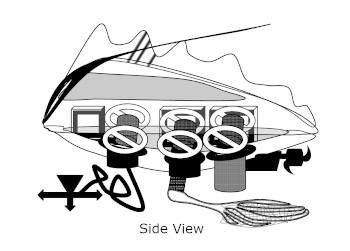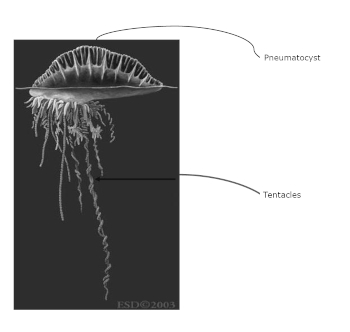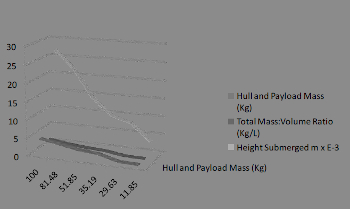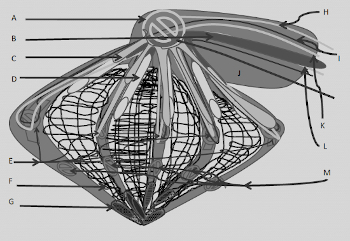The Development and Testing of a Solar Hydrogen Electric Biomechanical Portuguese Man O’ War (Physalia physalis): Biomechanical and Biomimetic Approaches to Subaquatic Physical and Chemical Immobilizations
Abstract
Subaquatic physical and chemical immobilization of small and large animal species has been challenging and dangerous.3 Fluid dynamic studies have demonstrated that the Portuguese man o’ war can be analyzed by biophysical parameters.2,4 Biomechanical studies have also been conducted to explore the development of biomimetic tentacles for use in infusion patches in patients.7,9 We have been developing a solar hydrogen electric biomechanical Portuguese man o’ war Physalia spp. (sHe-BMPM), which has a platform for immobilization (Figures 1, 3, and 4).1,5,7 The anesthetic apparatus mimics the biomechanics of the cnidocysts of the Portuguese man o’ war. Based on in-house hydrostatic data, it is designed to immobilize aquatic species which have masses of 5 kg or less (Figure 3).10 The anesthetic apparatus consists of a robotically operated, webbed hand which can capture a fish. A liquid anesthetic such as MS 222, can be sprayed by micronozzles located in the palmar aspect of the hand (Figure 2). The micronozzles are attached to plastic tubes which are connected to a micro-infusion pump, located in the hull.6,8 The probe carries test tubes, which can be used for collecting water samples at a variety of depths and latitudes.6 The inner lining of the mechanical pneumatophore has a layer of thin solar panels. The motor attached to the propeller is powered by solar hydrogen electrical energy.10
Figure 1

Three winches close to three 6V hydrogen fuel cells in the sHeBPM. The middle winch has the penta-digitated mechanical tentacle, which has a web arrangement of inter-digital nets. The third winch is attached to the multi-test tube water sampling probe.
Figure 2

Physalia physalis. Myers P, Espinosa R, Parr CS, Jones T, Hammond GS, Dewey TA. The Animal Diversity Web. animaldiversity.org. 2006. Accessed November 11, 2010.
Figure 3

Buoyancy model data.
Figure 4

Bio-mechanical tentacle: (A) proximal joint, (B) anesthetic fluid line, (C) proximal digits from joint, (D) distal ends of anesthetic fluid line, (E) middle joints, (F) net, (G) distal tip of digits with padded rubber caps, (H) afferent leads to servo motors in the medial joints, (I) efferent leads from servo motors in the medial joints, (J) cable tape, (K) afferent leads to servo motors in the proximal joint, (L) efferent leads from servo motors in the proximal joint, (M) distal interdigital joints.
Acknowledgments
This project has been funded by the Brooklyn Tech Alumni Research Foundation. We are grateful to Vlad Kopman and other investigators in Dr. Maurizio Porfiri‘s Dynamical Systems Laboratory in the Department of Aerospace and Mechanical Engineering at NYU-Poly, for technical assistance.
Literature Cited
1. Dun, CW, Pugh PR, Haddocks SHD. Molecular Phylogenetics of Siphonophora (Cnidaria), with implications for the evolution of functional specialization. Syst Biol. 2005;54(6):916–935.
2. Fish FE. Limits of nature and advantages of technology: what does biomimetics have to offer to aquatic robots? ABBI. 2006:3(7):49–60.
3. Fowler ME. Amphibians and fish. In: Restraint and Handling of Wild and Domestic Animals. 2nd ed. Ames, Iowa: Iowa State University Press; 1996:360–366.
4. Iosilevskii, G, D. Weihs. Hydrodynamics of the Portuguese man o’ war Physalia physalis. J R Soc Interface. 2009;6(36):613–626.
5. Lange CJ, Khan S, Zarin A, Grey D, Chen K. Bio-mimicry studies of aquatic species and the development of solar hydrogen electric autonomous under water vehicles and autonomous airborne vehicles. In: Proceedings of the American Association of Zoo Veterinarians, Los Angeles. 2008.
6. Lange CJ, Grey D, Chen K, Walcott HE. The development and testing of a remote-controlled solar hydrogen electric water sampling boat. Provisional Patent Application, U.S. Patent Office. 2007.
7. Oppegard SC, Anderson PA, Eddington DT. Puncture biomechanics of cnidarian cnidocysts: a natural actuator. Journal of Biological Engineering. 2009;3:17.
8. Roytman V, Lange CJ, Sakeeb K, Anika Z, Issa FA, Zhang A. The development and testing of a solar hydrogen electric air ship. U.S. Patent Office Provisional Patent. 2008.
9. Upadhyaya A, Baraban M, Wong J, Matsudaira P, van Oudenaarden A, Mahadevan L. Power-limited contraction dynamics of vorticella convallaria: an ultrafast biological spring. Biophys J. 2008;94(1):265–272.
10. Walcott HE, Kuo E, Ghani N, Aponte C, Abbrescia L, Binyatova I, et al. (Abstract) recent advances in she-biome: biomechanical and biomimetic approaches. Annual Partners in Science Conference, San Diego, California. 2011.